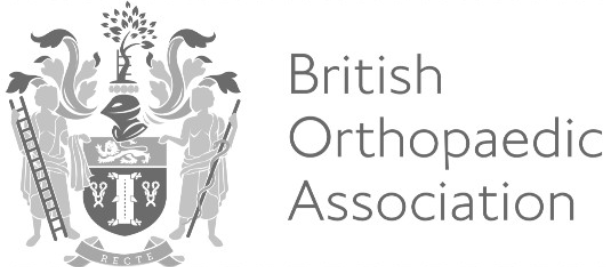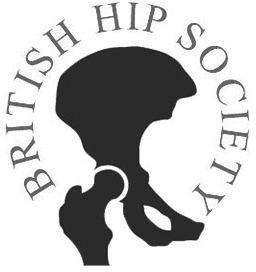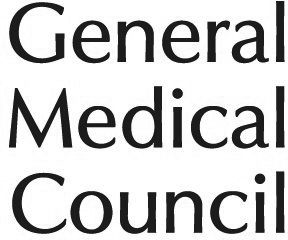Mr Giles Stafford, Consultant Orthopaedic Hip Surgeon
Mr Giles Stafford
Consultant Orthopaedic Hip Surgeon
Mr Giles Stafford MBBS BSc FRCS
Consultant Orthopaedic Hip Surgeon
Mr Giles Stafford
Consultant Orthopaedic Hip Surgeon MBBS BSc FRCS
Recommendations for Mr Stafford
These recommendations are for information purposes only. Doctors providing recommendations do so in good faith and are not responsible for clinical outcomes.












Recommended by:
Make an appointment
Address
-
Platinum Medical Centre
Platinum Medical Centre, 15 - 17 Lodge Road, London, NW8 7JA
-
London Bridge Hospital
27 Tooley Street, Wimbledon, London, SE1 2PR
-
The Wellington Hospital
Wellington Hospital South Bldg, The, 8A Wellington Pl, London, NW8 9LE
-
Telephone consultation
Virtual
About Mr Giles Stafford
Mr Giles Stafford is a London-based consultant orthopaedic hip surgeon with specialist expertise in sports-related hip injuries, minimally invasive and custom hip replacement, including hip arthroscopy, femoroacetabular impingement (FAI) surgery, and hip dysplasia (DDH). He treats a wide range of hip and pelvis complaints. With extensive training and years of experience in hip and knee surgery, Mr Stafford is a true expert in hip arthroscopy and sports hip injuries. He also shares his insights and expertise by teaching hip arthroscopy courses.
Mr Stafford graduated with a medical degree in 1999 from Guy’s and St Thomas’ Hospital (King's College London School of Medicine). He then trained at Bart's and The London School of Medicine and Dentistry. Following this, he completed a specialist training programme in orthopaedics as part of the North West Thames Foundation School (Imperial College London). He also completed fellowships at University College London Hospitals NHS Foundation Trust, Cambridge, Norfolk, and Norwich.
Mr Stafford practices privately at Sport Hip London, where he collaborates closely with leading sports physicians and physiotherapists to ensure patients receive optimal care both before and after surgery. He believes in providing an individual and tailored approach to each of his patients, according to their wishes, needs, and specific injuries. Mr Stafford is equipped with the latest technology and specialist techniques, including 3D-printed instruments and customised implants. He often uses a technique called ‘Enhanced Recovery’ for patients requiring a hip replacement, which helps to minimise post-operative pain and complications.
Mr Stafford has published widely in the field of orthopaedics and is frequently invited to speak at both national and international conferences.
Areas of expertise
- Acetabular reconstruction
- Arthroscopy
- Avascular necrosis (AVN) of the hip
- Bone conserving hip replacement
- Bone conserving mini hip replacement
- Bursitis (hip)
- Customised hip replacement
- Enhanced recovery
- Femoroacetabular impingement
- Hamstring tear
- Hip and groin pain
- Hip arthritis
- Hip arthroplasty
- Hip arthroscopy
- Hip dysplasia (DDH)
- Hip fractures
- Hip impingement
- Hip injections
- Hip preservation surgery
- Hip replacement
- Hip resurfacing
- Joint injection
- Keyhole hip surgery
- Knee cyst
- Knee injections
- Knee ligament repair
- Labral repair
- Labral tear
- Minimally invasive hip surgery
- Motion analysis
- MRI scan
- Muscle injury
- Osteoarthritis
- Partial knee replacement
- Patella (kneecap) dislocation
- Posterolateral corner injury
- Postoperative rehabilitation
- Revision surgery
- Robotic assisted hip surgery
- Sports injuries
- Stress fractures
- Total hip replacement
- Total knee replacement
Frequently asked questions
What are the common symptoms that your patients tend to present with?
The most common thing is groin pain, which is pain felt at the top of the thigh. A hip pain is felt more laterally on the bony prospect that they can feel, but that's not necessarily the case. True hip pain is felt in the groin, in the top middle of the thigh.
They often get pain sitting for long periods and stiffness getting up out of chairs. They will find that their sporting activity and sporting life is becoming increasingly limited. In more advanced cases, they find their work-life balance can be affected. They will find that sitting for long periods of time for commuting becomes increasingly difficult.
Patients also regularly complain of clicking around their hip area, which is sometimes painful. As the hip is increasingly stiff, they often get back pain as well, or pain radiation down to the knee.
What are the treatments that you're able to offer your patients?
With the regards to the treatments that I personally offer, I offer keyhole surgery for patients whose wear and tear in their hip is not too advanced, where they want plans to repair a damaged tissue and usually re-scope the hips, so it moves more freely and slows any progression of wear and tear changes.
The other treatment that I provide is various forms of hip replacements which are tailored to the patients and their specific needs and anatomy. I do a range of different hip replacements, going from mini hips which are more bone-conserving styles of hip replacements through to more standard designs. As I mentioned, depending on what they need. I also exclusively use a ceramic-on-ceramic bearing which doesn’t produce any biologically-active debris and which we think is going to last the longest.
I also do a lot of diagnostic injections as well, which is very useful because a lot of the patients feel that they have a lot of things going on, not just pure hip pain. There's often muscle balance issues. Often, a diagnostic injection into the hip joint or into one of the surrounding muscles is extremely helpful in trying to ascertain where the primary source of pain is coming from.
What are your areas of sub-specialist interest?
My areas of specialist interests are mainly sports-related hip injuries and trying to keep people as active as possible for as long as possible.
With this in mind, the first thing that tends to go in a hip is a tear of the labrum. People get labral tears for various reasons. Often, there's a mild shape abnormality of the hip. Occasionally, it's just due to a specific injury. A large part of my practice is repairing labrum for patients which will improve their symptoms.
The other things that I also look at are mild shape abnormalities of the hip which tend to be more developmental or in people who have a very active lifestyle. I'm very interested in hip replacements in young people. I also do a lot of custom hip replacements if patient's anatomy requires it.
I do hamstring repairs.
What I've developed over years is Enhanced Recovery Technique, which was based on something I've had exposure to during my fellowships, but I'm on version 11 of the original now. That entails a very specialised, but not minimally invasive anaesthetic. Although patients sleep during their operation, they don't wake up feeling sick.
With some techniques we use during the operations, we can mobilise a patient and get them out with physiotherapists around two hours post hip replacement. They can have physio two or three times a day and tend to go home after two nights.
Professional memberships



.jpg)


Articles by Mr Giles Stafford
Arthroscopic repair of delaminated acetabular articular cartilage using fibrin adhesive. Results at one to three years
Validation of revision data for total hip and knee replacements undertaken at a high volume orthopaedic centre against data held on the National Joint Registry

 Instant booking
Instant booking
































































